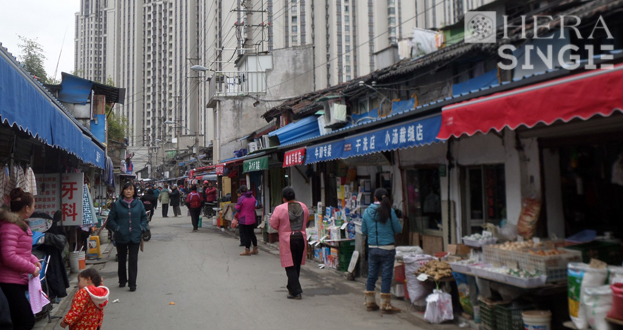
A comparison of ‘global cities’ begins to reveal a set of fractal patterns in the repetition of displacement and demolition.
A comparison of ‘global cities’ begins to reveal a set of fractal patterns in the repetition of displacement and demolition. Condominium stacks loom over soon-to-be-demolished housing as inner cities are eviscerated and the economically peripheral removed outwards to the peri-urban while those that can afford it move upwards into high rise apartments. Industrial history is torn down and rebuilt as simulacra in which the imagination of policy makers and visions of Starchitects attempt to be made manifest in the slogans that reify the Global City.
This repetition is underpinned by the circulation of policy that links cities internationally, for example in the discourse of creative industries as a driver of urban redevelopment. Such policies have seen the transformation of former industrial areas into high tech quarters, fashion hubs and retail centres. In Shanghai, for example, a former textile factory established by the Japanese in the 1920s became in the 2000s Shanghai Fashion Centre (SFC). A wide boulevard leading down to the riverside is lined on either side by retail outlets, including Starbucks, Nike, Gap, Levis, Converse, Adidas, Timberland, Jaguar and Samsonite. The complex also houses apartments, a club, studio offices and event centre.
Within walking distance from SFC is the remains of the Dinghaiqiao settlement. Its central market lined by fruit and vegetables, raw meat and fish, cramped grocery and stationary stores. Behind the market confined tenements housed the textile workers and in the present continue to house the remnants, the left overs, those who cannot afford to move into the new surrounding condominiums that threaten to swallow the settlement. Its pending demolition will make invisible all traces of their former presence.
Yet there is also a temporal inversion in these processes of change with a miscellany of the past brought into the present so that threads of memory are not snapped too abruptly. Facades of collective, nationalist achievement remain, with a strap line to remind us that SFC is ‘shaping the centuries, illuminating the present’. In this strategy the unseemly vestiges of the past that reek of dirt and sweat are removed: factories reincarnated as shiny, clean retail outlets where the links to production are severed in air-conditioned ambience. Manual labour is replaced by smart, English speaking retail assistants, shiny and clean, although at times just as precariously positioned in the global economy.
Effaced by the contemporary creative sector, it is perhaps then ironic that it is creative work that renders visible again the labour of the factory. The artist Guo Qingling, in a series of paintings for the ‘Precariously Yours’ exhibition (December 2014, Shanghai, Fei Contemporary Art Centre), centred her imagination on the body of the woman at work. These ‘left over ladies’ are residual economic components, a lumpen necessity in one of many global cities that now valorises the services sector and fictive capital. Emanating labour and the anonymity of the production line, faces are averted yet the weight of their work is evident nonetheless. Heavy brush strokes delineate backs and the movement of arms connecting and constructing the repetition of factory work and the form of urban planning that marks deindustrialisation.
However, the location of Qingling’s studio in the M50 art district is a reminder yet again of the reproduction of global city strategy. This former industrial area was demarcated by local authorities to become a series of galleries, promoting China’s contemporary art, and displacing the abandoned for the manufacturing of creative space.